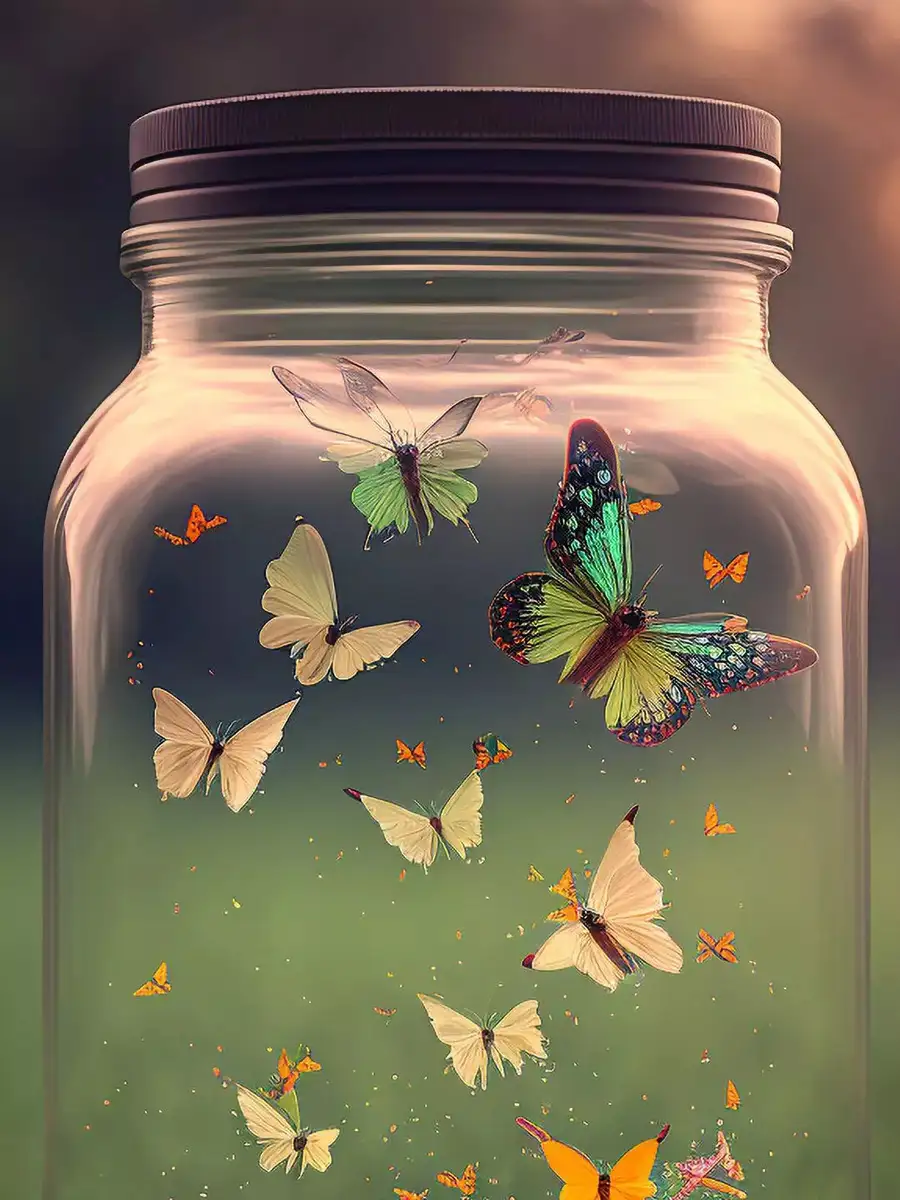

India, a land of vibrant biodiversity, is home to a dazzling array of butterfly species, each more captivating than the last. With their delicate wings painted in a kaleidoscope of colors and intricate patterns, these ethereal creatures contribute significantly to the country's ecological balance and aesthetic appeal. Here are nine of the most beautiful butterfly species found in India:
Emperor of India (Kaiser-i-Hind): This magnificent butterfly, Teinopalpus imperialis, is found in the Himalayan region. It is celebrated for its iridescent blue wings and is considered one of the most beautiful butterflies in the world. The Emperor of India also holds cultural significance and is featured in art and literature.
Blue Mormon: The Blue Mormon (Papilio polymnestor) is a large and striking butterfly found in the Western Ghats and the Himalayas. Its velvety black wings are adorned with brilliant blue markings, making it a sight to behold. The Blue Mormon is considered sacred in Hindu mythology, representing the soul.
Great Windmill (Crimson Rose): Native to Southeast Asia, including India, the Great Windmill (Atrophaneura dasarada) is a large butterfly with impressive coloration. Its wings are patterned with shades of black, crimson, and blue. Also known as the Crimson Rose, this butterfly is highly sought after by enthusiasts.
Tamil Lacewing: This butterfly (Cethosia nietneri) is found in South India, particularly in Tamil Nadu and Kerala. It boasts vibrant orange-red wings with intricate black veins and white spots, creating a stunning visual display. The Tamil Lacewing plays a vital role in pollination, contributing to the biodiversity of its ecosystem.
Common Jezebel: A bright and beautiful butterfly commonly seen in India, the Common Jezebel (Delias eucharis) features a mix of yellow, orange, black, and white on its wings, arranged in perfect symmetry.
Tree Nymph: Belonging to the genus Idea, Tree Nymph butterflies are known for their large size and delicate, white wings. Idea malabarica is found in Southern India, especially the Western Ghats, and can have a wingspan of up to 160 cm. Its off-white grey body has black spots, and it is known for its gliding flight, often hovering over a particular spot.
Orange Oakleaf (Dead Leaf Butterfly): The Orange Oakleaf (Kallima inachus) is a master of disguise. When its wings are closed, it perfectly resembles a dry leaf, providing excellent camouflage. However, when open, it reveals vibrant orange and blue colors.
Tailed Jay: The Tailed Jay (Graphium agamemnon) is known for its rapid flight and distinctive appearance. Its black wings are adorned with green dots, adding to its unique charm.
Peacock Pansy: While not as colorful as a peacock, the Peacock Pansy (Junonia almana) is a beauty with distinct 'eye spots' on its wings, similar to those on a peacock's feather. The contrast of orange and brown-black colors enhances its visual appeal.
These nine species represent just a fraction of the butterfly diversity found in India. Butterflies play a crucial role in the ecosystem as pollinators and as prey for other animals. They are also indicators of a healthy environment. Factors such as pesticide use, deforestation, and climate change are causing habitat loss for butterflies. Recognizing the importance of these creatures, India is taking steps to protect them and their habitats. The recent designation of Aralam Wildlife Sanctuary in Kerala as India's first butterfly sanctuary marks a significant step towards focused conservation and increased funding for these vital pollinators. Citizen science initiatives, such as the Indian Foundation for Butterflies, also contribute to data collection, research, and awareness about butterfly conservation.